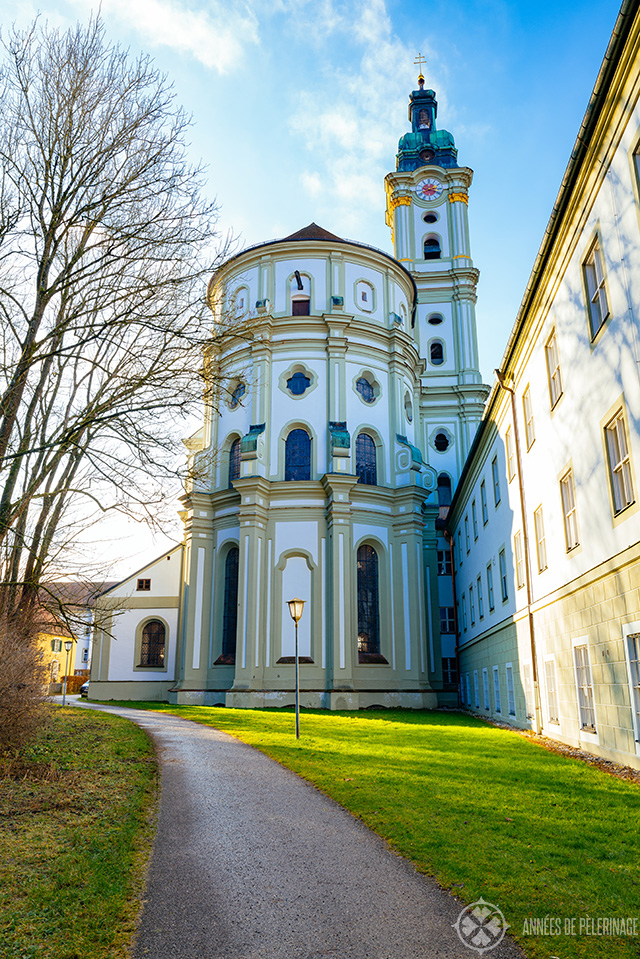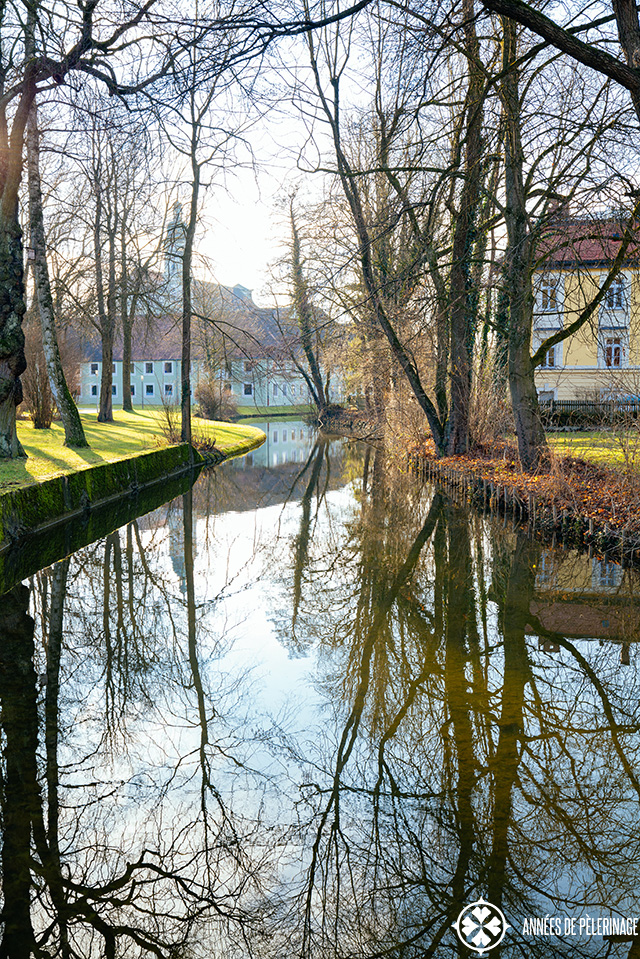Munich is a city of many highlights and outstanding tourist attractions. There are so many things to see, that my current list (check it out here) mentions 50 must-see places. A lot of tourists seem to forget, however, that there are many equally outstanding gems on the outskirts of Bavaria’s capital. Fürstenfeld Abbey is one of them.

The baroque masterpiece was founded in 1258 AD and quickly established itself as a local powerhouse. The story behind the foundation is quite spectacular: Duke Ludwig II of Bavaria had his wife executed because he suspected her of adultery. But his suspicions turned out to be wrong, the pope ordered him to found an abbey to atone for the murder of Maria of Brabant.

The Cistercian abbey gained power and countless estates in the ensuing centuries, because of the ruling Wittelsbach family supported them. Having your flock of monks praying daily for your salvation was quite appealing to the dukes and later prince-electors of Bavaria.
The abbey was plundered by the Swedish King during the Thirty Years War and only slowly recovered from the destruction. Thanks to good management, Fürstenfeld was able to afford a new baroque church in 1691, which is basically the ensemble you see today.

The St. Maria Ascension church is one of the prime examples of South German Baroque of that time and a true masterpiece. Giovanni Antonia Viscardi, back then the court architect, was commissioned with the building, while fabled Cosmas Damian Asam and Egid Quirin Asam designed most of the interior frescos and stucco work.

It took almost one hundred years to finish the interiors, but the design remains remarkably consistent. There are so many details to see and I urge you to take half an hour and just sit down on the benches and let your eyes roam across the golden baroque splendor.

In 1803, the Fürstenfeld Abbey fell victim to the general Secularization in Bavaria and was dissolved. The church itself is still in use today, but the rest of the abbey is used as a police school.

I want to be honest with you, though. Fürstenfeld Abbey doesn’t appear on a lot of lists with the best day trips on Munich (click to read mine). I think it is quite amazing, but probably the famous UNESCO World Heritage Church of the Wies gets all the attention.
Museum Fürstenfeld

You will also find a little museum in the courtyard of the abbey. The Museum Fürstenfeld is quite a little gem. The ground floor is dedicated to the history of the abbey, while you will an archeological exhibition on the third floor. The exhibitions are put together really well and are quite worth the little detour.
Entrance fee is 4 euros per adult
Opening hours of Fürstenfeld Abbey

There is no entrance fee for the Fürstenfeld abbey, but you should be aware of the opening hours before you plan your visit:
- Easter – October: 11 am – 6 pm (closed on Mondays)
- November – Easter: only weekends between 1:30 pm – 4:30 pm
Please be aware that around the holidays (so Dezember 23rd- Januar 6th) the Abbey is mostly closed. You can only enter the anteroom, but not walk through the actual nave.
How to get to Fürstenfeld Abbey

It’s incredibly easy to get from Munich to Fürstenfeld Abbey. Just take the suburban train S4 to either Geltendorf or Grafrath from the central station (or any other station on the S4 line) and get out at Fürstenfeldbruck. They leave every 20 minutes and it takes about 30 minutes to get there.

From there, it’s a short walk of about 10 minutes to the Abbey. You could take bus no. 815 for two stations. Given that you have to wait for the bus, it doesn’t top directly in front of Fürstenfeld Abbey and the way from the station is totally level, it doesn’t make any sense in my opinion. Plus, there is a little park around the Abbey which can be quite beautiful.








